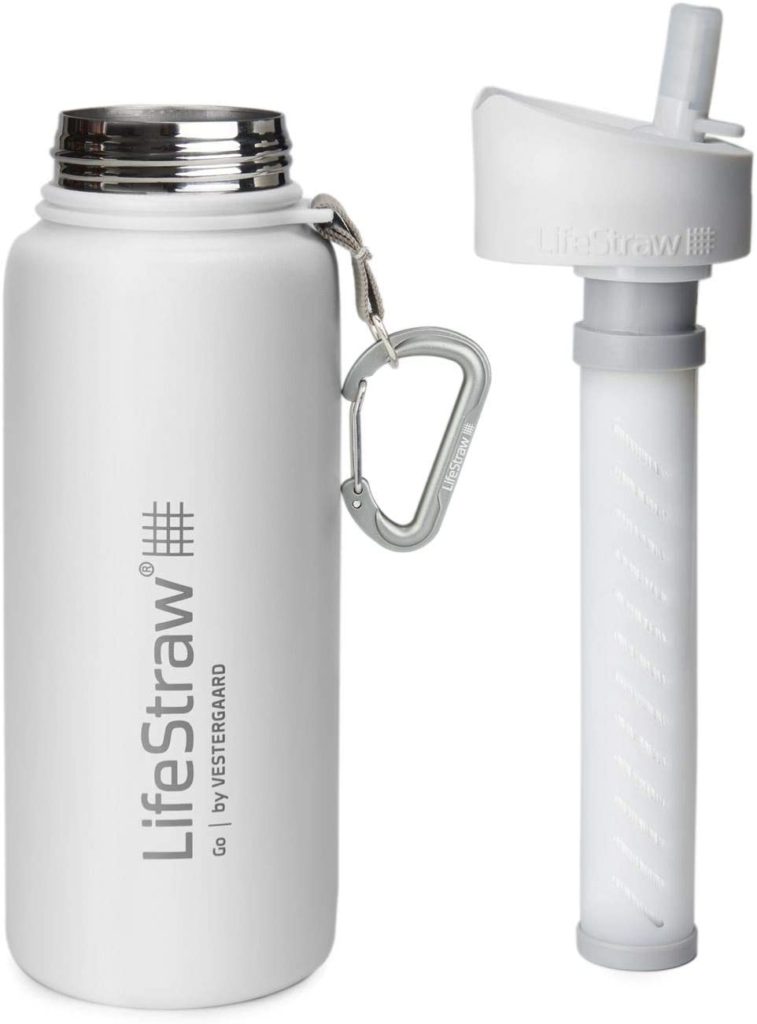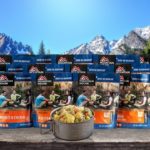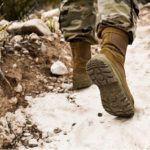Welcome to Best Prepping Tips
It’s easy to live in your own bubble and find it unnecessary or unrealistic to prepare for emergencies. However, for the people who have survived a natural or man-made disaster, they will be quick to tell you how important it is to be prepared.
Survival Preparedness is something it should not be put away or postponed. Sometimes, it takes a brief local emergency like a power outage or gas explosion, to make us agonizingly aware of how unprepared we are if major disasters were to happen.
The painful truth is that with each day, possibility of disasters or emergency situations keeps increasing. We are in constant threat of the changing climate, and the disasters mother nature promises to bring; earthquakes, tsunamis, wildfires, storms, hurricanes. Current political climate and a weak global economy create an unstable government. Riots break out in many major cities. A lot of our neighborhoods are no longer safe. And with our current overreliance on technology, disruptions on the power grid can have catastrophic consequences.
If this were to happen, wouldn’t it be great if you are well prepared and have everything you needed to survive any situation? Survival Preparedness will replace all this fear with confidence. That’s why this survival preparedness guide is here to help anyone interested to know more about prepping, what it means, why you need to prep, and how to go about prepping as a beginner.
The good news is that it doesn’t take much effort to prepare as you might have initially imagined. This comprehensive beginner’s guide to survival preparedness contains steps to take, salient points, and resource links where you can learn more about each aspect of survival preparedness.
What is Prepping and Why Should I Prepare?
For a beginner, the most important thing is to take the first step, however small. You can learn more along the way and take more and bigger steps. Before long, you will prepared and you will be glad that you did.
What is Prepping?
Survival Preparedness is planning and training for emergencies. You don’t have to be a gun-toting individual to be called a qualified prepper. You could be teaching yourself some first aid skills in preparation for the unexpected. This is part of being responsible and being a good citizen.
Why Should I prep?
Well, self-preservation is a basic human instinct. Why wouldn’t you want to prep if it protects your life and that of family and friends? In fact, U.S. government agencies and nonprofit agencies advise people to begin prepping because they know they might not always be there when a disaster strikes. This makes total sense – if there’s a prolonged snowstorm or flood, it’s those who have the survival preparedness mindset and planned well in advance that will get out of the situation unscathed.
Bugging Out Vs. Shelter in Place
There are two different types of prepping: sheltering in and bugging out. Each has its benefits and downsides. Bugging out means you’re prepared to get your survival accessories and hit the road. Shelter in, on the other side, means you’re preparing to get the items needed for emergency preparedness and dig in.
How Do I Start Preparing for an Emergency?
There are two different types of prepping: sheltering in and bugging out. Each has its benefits and downsides. Bugging out means you’re prepared to get your survival accessories and hit the road. Shelter in, on the other side, means you’re preparing to get the items needed for emergency preparedness and dig in.
Step 1: Survival Preparedness Basics
Survival Preparedness may become overwhelming if you start acting on fear at the onset. We advise you to follow a well-reasoned plan hence why we created this guide for you.
If you have a plan and understand what is required for you and your family, you can properly appropriate your budget to the necessities, and not waste your hard money on impulse buys.
What are you preparing for?
Anything can happen to anyone at any time. This is one of the main principles of survival preparedness. But even veteran preppers know they can never prepare enough. So, you ought to focus on the most likely emergencies around you. For people on the U.S. East Coast, this would mean preparing for hurricanes, while those in the Midwest would better prepare for tornadoes instead.
The other types of emergencies can include:
- Home fires
- Winter storms
- Earthquakes
- Hurricanes
- Flooding
- Wildfires
- Volcano Eruption
- Tsunami
- Political and social upheavals
- Grid outages
- Pandemics
Step 2: Preparing Yourself
You want to prepare yourself as your survival depends on your health and physical fitness. Your gear cannot save you if you don’t have the physical endurance to get yourself and your family to safety.
Physical and mental survival preparednesss
Physical fitness is an area everyone always has room for improvement. If survival preparedness is serious to you, the first thing to do is to get in shape. Make exercising a part of your routine.
You can work on improving your:
- Stamina and power– engage in exercises like rock climbing
- Cardiovascular health and endurance – hiking, swimming, and backpacking
- Flexibility and balance – rock climbing
- Strength – Tai Chi, swimming, and yoga
- Coordination – exercises like Tai Chi, yoga
You also have to mentally prepared, called emergency conditioning. Practice in your mind how you will handle a bad situation. Were it to happen, you can stay calm and rely on your body to follow the practiced routine to bring your to safety
Step 3: Everyday Carry
Everyday carry or EDC items form a big part of your personal survival preparedness. EDC items are not just defensive items you carry around everyday, but rather, EDC is a philosophy. You don’t know what might happen and so you must remain prepared at all times.
A good EDC survival kit list will at least have a pocketknife or multi-tool, lighter, flashlight, notepad, pen, duct tape, and a cellphone. You have more room if you have a backpacking which allows you to carry a large selection of EDC items if needed.
Step 4: Prepare Your Home for Shelter in Place
While bugging out is best when disaster strikes and you have to evacuate immediately. In other situations, bugging in or sheltering in place could be the best way to keep you safe. For instance, work and school may be canceled due to a blinding heatwave, or a horrible hurricane that flooded your town for a week, or an epidemic that forces you to remain quarantined in your home.
During these situations when you have to hunker down, you will need to have a stockpile of food, water, medical supplies, tools, communication devices, heating and lighting gear, and hygiene gear, among other things. You will be happy you have practiced survival preparedness without postponement.
Step 5: Prepping for Evacuation
Evacuating a home isn’t something most Americans are enthusiastic about. Yet, it is an ever-increasing possibility. One study says about 22% of Americans have had to evacuate due to a natural disaster. Having a packed bag gives you an upper hand over anyone who has to pack up before leaving their home and could help you beat traffic. Sometimes having this sort of readiness could mean the difference between life and death.
What to pack in bug out Bags
Deciding what to put in your best bug-out bag is one of the hardest thing in survival preparedness. Since you’re going to carry it, it’s best to keep it light. Your survival kit list should only have what is absolutely necessary during the period away from your home.
If you have kids and they are big enough, they should have their own bug-out bags. Each bag should be self-sufficient in case you get separated. Your ultimate survival kit bug-out bag should contain these must-haves:
- Food and water – keep the food light but nutritious, e.g., protein bars, MRE’s, meal replacement bars, freeze-dried food. A minimum of one week’s food but generally, aim for a month of food.
- Water – Also aim for 10-20 gallons of water per person. An alternative is to have some sort of water filtering or water filtering device, such Lifestraw Universal Water Bottle Filter.
- First aid kit with prescription medicine – have the basic knowledge about first aid. You can contact the American Red Cross for first aid classes.
- Cash and coins
- Water purification tabs
- Survival knife
- Rain poncho
- Space blanket
- Sturdy shoes
- A jacket and 2 changes of clothes
- Sunblock
- Bug spray
- Mess kit
- Portable radio
- Multi-tool
- Duct tape
- Candles and matches, gas stove, mini flashlights with an extra set of batteries
- Fire kit
- Copies of important documents
- Charging cords for your devices and communication devices like a prepaid phone
Essentially, you will want to pack according to your individual needs.,
Self-defense and weapons
Defending yourself and your family after a disaster is something you need to consider carefully during survival preparedness. Most preppers feel safe by owning and packing a gun. We highly recommend at least taking some basic firearm training, more advance classes are also desirable. Keep safety your first priority. You could use both rifles and shotguns for your own protection. Unfortunately, you may have to protect your food inventory against pillagers. Weapons can also expand your food sources, such as hunting.
You may also want to educate yourself in other forms of self-defense such as:
- Martial arts
- Combat training
- Personal self-defense
Step 6: Preparing a Plan
Apart from your packed-up bug-out bag essentials, you also need an evacuation plan. Without a plan, raw emotions may impair your judgment.
Bug out location
Your survival preparedness should include a bug-out plan which identifies a bug out location and how you can get there. Brainstorm multiple locations and different routes to get there. While you may have a dedicated bug-out cabin or location, be aware that plans can fail during a disaster. Anticipate road closures or if the primary location becomes inaccessible or unusable.
Step 7: Learning Wilderness Survival
Now that you have a well prepared bug-out bag, and you have educated yourself on self-defense techniques and have acquired other survival skills, what’s next?
In this last section of our survival preparedness guide, we will take a look at how to practice survival preparedness prior to any disasters.
The best way to improve your survival skills is to practice them regularly and gradually undertake a lifestyle change. You could start off by going off the grid and practice how to live without public utilities – dry run you alternative energy sources, alternative water sources, etc.
Re-learn traditional skills and practice them regularly — skills like CPR, foraging, hunting, toolmaking, etc. You can also go backpacking with your family. It is a great way to enhance your survival skills apart from the family bonding and the pleasure that comes with the adventure.
Practicing survival preparedness will give you the skills, knowledge and confidence if an emergency or SHTF (shit hits the fan) situation occurs. It can save your life.
Beginner Survival Preparedness Conclusion
With this guide, you have the know hows of how to get started with survival preparedness. With some practices, you will no longer be a beginner.
What happens next will greatly depend on your objectives and you taking the first step.
Ultimately, your survival will depend on your specific circumstances, how physically and mentally fit you are, the skills and knowledge you have accumulated, possession of the right gear, and the extend of your resourcefulness and the support from your family, your friends and your community.







